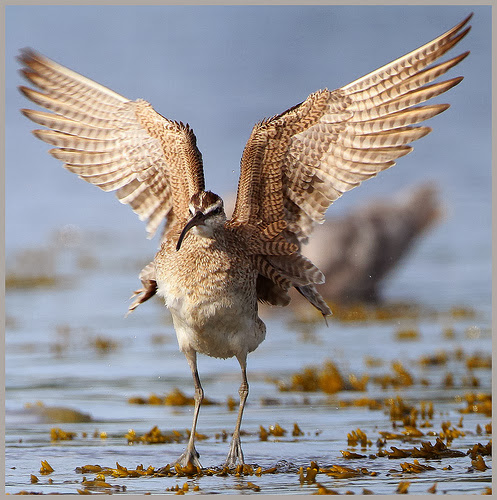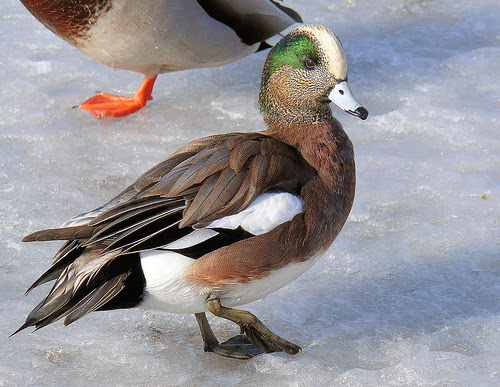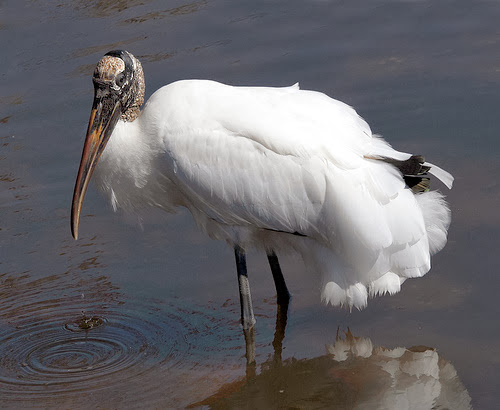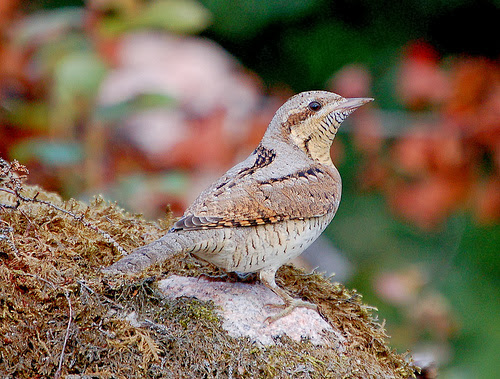They may not be as colorful as the turacos, lovable as the talking-parrots or as agile as the fierce raptors — but these birds are indeed fascinating! Read on and learn more about them.
This is the penultimate post to a 25-part of the highly-commendable and widely read the ‘Alphabet Animal’ series. Presenting – the fascinating birds that start with the letter V. Read on and learn more interesting facts about them.
Waxwing
The Waxwing (Bombycillidae) are any of three species of passerine birds found in North America and in eastern Asia. The Bohemian Waxwing (Bombycilla garrulus) and Cedar Waxwing (B. cedrorum) are the two North American species and the third species is the Japanese Waxwing (B. japonica). All three species have mainly soft silky brown plumage characterized by unique red tips in some parts of the wing feathers.
These fascinating birds prefer woodlands and open areas. The eyes are marked with a black line. The bill, throat, short legs and feet are dark. Waxwings have pointed crest and square-ended tail with a red or yellow tip. These are arboreal birds known for their high-pitched calls feed mainly on berries and occasionally eat insects.
Wattlebird
Wattlebirds (Anthochaera) or Warty-faced Honey-eater, are any of three birds of the Honeyeater, endemic to native to Australia. The species characterized by their brightly colored wattles include the Yellow Wattlebird, the Red Wattlebird, the Little Wattlebird, and the Western Wattlebird. The large wattles (about half an inch long) hang down below each ear. The species may come with brown, gray or white plumage.
Whimbrel
The Whimbrel (Numenius phaeopus) is a fairly large wader with distinctive long down-curved bills. A migratory species distributed worldwide, these waders breed across much of North America, Africa, Europe and Asia. On average, adult wattlebirds measure 37–47 cm (15–19 in) and weigh about 270–493 g (9.5–17.4 oz). The species is characterized by grayish-brown plumage with white back and rump, striped head with dark crown, a long curved bill and long legs. Whimbrels feeds by probing soft mud for burrowing crabs. It also eats fish, insects, worms, and small aquatic invertebrates.
White-eyed Vireo
The White-eyed Vireo (Vireo griseus) is a small songbird widespread in shrubby areas of southeastern USA. The species forage methodically among leaves gleaning insects as it moves. This fascinating bird is more known for its explosive song than its looks. Generally, white-eyed vireo measures 13 – 15 cm long. Its head and back sports grayish-olive feathers. The underbody has white plumage laced with yellow flanks. Eyes have white irises encircled with yellow spectacles. Tail and wings are dark (each wing sporting white wing bar.) During the summer season, white-eyed vireos feed mostly on insects but will also eat berries, snails, and small lizards.
Wigeon
The Wigeon is any of three species of medium-sized duck in the genus Anas. The species flock in great number and breed on wet grasslands, open moor, lakes, and occasionally on coastal marshes. All three species have round heads and short bill. Breeding drakes (males) have chestnut-colored heads, pink chests, white bellies, gray backs and predominantly black tails. Wigeons generally measure 48 cm in length with an 80 cm wingspan and about 800 g in weight. It feeds mostly on leaves, shoots, and some seeds. This fascinating bird is well-known for its ‘wheeooo’ whistling call.
Wood Stork
The Wood Stork (Mycteria americana) is a wading bird native to North America and the only stork that breeds in the United States. A large wetland bird , it inhabits marshes, swamps, streams, coastal areas and ponds in the southern United States. The species is also a breeding bird in South America in particular Argentina. Adult males measure 83–115 cm (33–45 in) tall with a 140–180 cm (58–71 in) wingspan and weigh around 2.5–3.3 kg (5.5-7.3 lbs). Typically, wood stork sports all-white plumage with blackish-gray skinny legs and pink feet. It has black, bald head and a thick, down-curved bill. Its diet includes: small fish, snails, tadpoles, insects, and aquatic invertebrates.
Willet
The Willet (Tringa semipalmata)is a large, stocky shorebird characterized by its long gray legs and straight bill. The species breeds from central Canada to northeastern California and winters along the Atlantic Coast. It prefers freshwater and salt marshes, coastal beaches, and wet prairies. Willet has drab plumage with white and black pattern running across each wing. The underparts are lighter in color and the tail is white laced with a dark band at the tip. Adult males measure about 13-15 inches in length. This fascinating bird feeds on small crabs, marine worms, fish, and aquatic insects.
Woodcock
The Woodcock is any of eight species of wading birds in the genus Scolopax. Only two species namely: the Eurasian Woodcock (Scolopax rusticola) and the American Woodcock (Scolopax minor) are widespread, the others including the Philippine Woodcock (Scolopax bukidnonensis) are local island endemics. The species prefers moist woodlands. Another fascinating bird, it is generally blackish/brown in color with long slender bill. Its large eyes is well-positioned on the sides of its head. Adult males can measure up to 10 to 11 inches long and weigh 4 to 7 ounces. This bird feeds mainly on earthworms, insect larva, grubs and other invertebrates.
Wren
The Wrens are any of the 80 extant species of passerine birds in the family Troglodytidae. Depending on the species, wrens inhabit a wide range of habitats – from dry, wooded areas, rocky coasts, rainforest, and cultivated land. It is easily recognized by its generally drab plumage; small, round body and its distinctive small tail. Depending on the species, wrens measure 10 cm or less (3.9 in) – 22 cm (8.7 in) and weigh from 9 grams (0.32 oz) – 50 grams (1.8 oz). Most species feed on insects, spiders, larvae and occasionally seeds and fruits.
Wryneck
The Wrynecks (genus Jynx) are small sparrow-sized bird comprising the genus Jynx. These Old World woodpeckers have two extant species; the Eurasian Wryneck (Jynx torquilla) and the Rufous-necked Wryneck (Jynx ruficollis). It is widespread in most of Europe and parts of central Asia. The species prominent features include a large head, long, sticky tongue, and short, dagger-like bills.
Both species sport cryptic plumage with flashes of gray and brown patterns. On average, males measure long with a 26 cm wingspan and up to 38 grams in weight. Wrynecks feed mostly on ants, but also eat other small insects. This fascinating bird has the ability to twist its neck up to 180 degrees.
Check out the entire Animal Alphabet list here:
Amazing Animal Alphabet Series 1
Amazing Animal Alphabet Series 2









